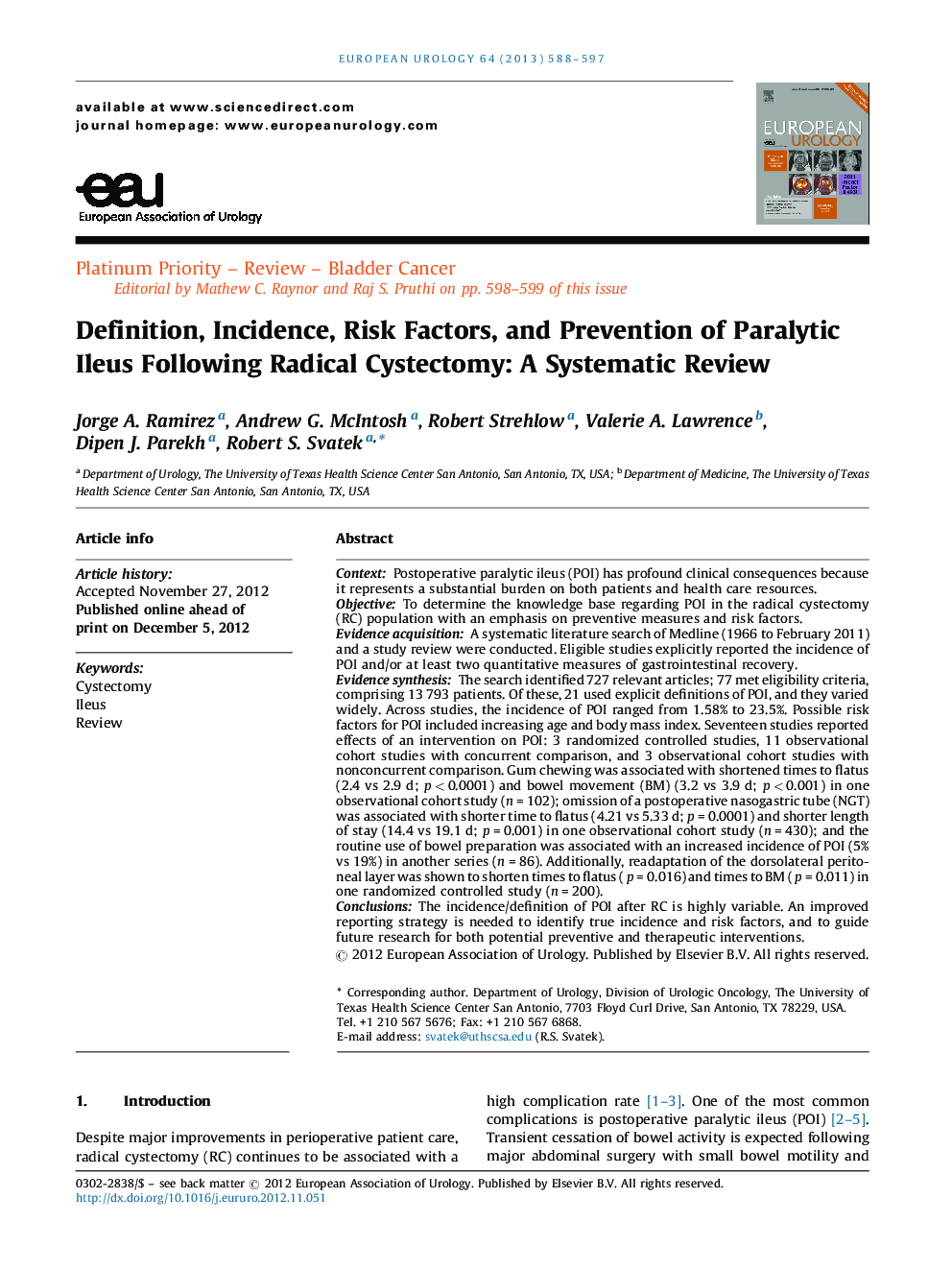| Article ID | Journal | Published Year | Pages | File Type |
|---|---|---|---|---|
| 3923859 | European Urology | 2013 | 10 Pages |
ContextPostoperative paralytic ileus (POI) has profound clinical consequences because it represents a substantial burden on both patients and health care resources.ObjectiveTo determine the knowledge base regarding POI in the radical cystectomy (RC) population with an emphasis on preventive measures and risk factors.Evidence acquisitionA systematic literature search of Medline (1966 to February 2011) and a study review were conducted. Eligible studies explicitly reported the incidence of POI and/or at least two quantitative measures of gastrointestinal recovery.Evidence synthesisThe search identified 727 relevant articles; 77 met eligibility criteria, comprising 13 793 patients. Of these, 21 used explicit definitions of POI, and they varied widely. Across studies, the incidence of POI ranged from 1.58% to 23.5%. Possible risk factors for POI included increasing age and body mass index. Seventeen studies reported effects of an intervention on POI: 3 randomized controlled studies, 11 observational cohort studies with concurrent comparison, and 3 observational cohort studies with nonconcurrent comparison. Gum chewing was associated with shortened times to flatus (2.4 vs 2.9 d; p < 0.0001) and bowel movement (BM) (3.2 vs 3.9 d; p < 0.001) in one observational cohort study (n = 102); omission of a postoperative nasogastric tube (NGT) was associated with shorter time to flatus (4.21 vs 5.33 d; p = 0.0001) and shorter length of stay (14.4 vs 19.1 d; p = 0.001) in one observational cohort study (n = 430); and the routine use of bowel preparation was associated with an increased incidence of POI (5% vs 19%) in another series (n = 86). Additionally, readaptation of the dorsolateral peritoneal layer was shown to shorten times to flatus (p = 0.016) and times to BM (p = 0.011) in one randomized controlled study (n = 200).ConclusionsThe incidence/definition of POI after RC is highly variable. An improved reporting strategy is needed to identify true incidence and risk factors, and to guide future research for both potential preventive and therapeutic interventions.
